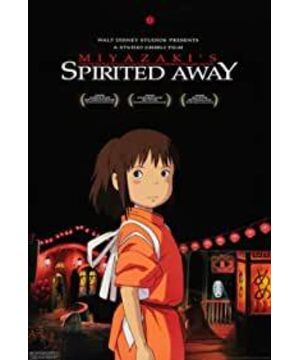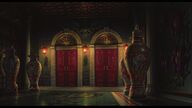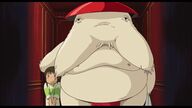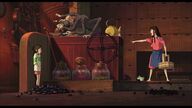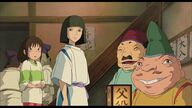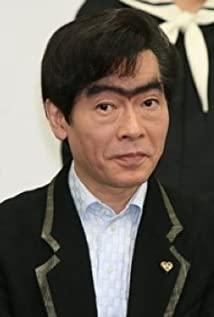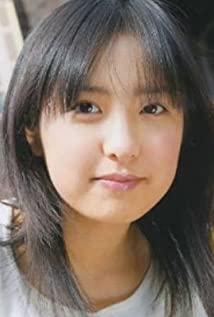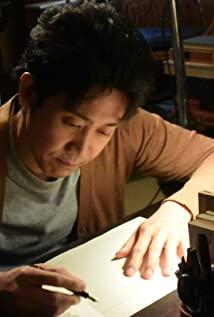1. Hayao Miyazaki thinks he is just a foreman in a small factory, not an artist. What does the term informativeness mainly refer to in our work? It refers to the fineness of the painting. Ghibli's movies have a lot of information, and it is impossible to fully understand them by watching them only once, so the audience will go to the cinema to watch them many times. So does it mean that the more information the better? It is very hard to increase the amount of information. The more elaborate the production, the more money, manpower and material resources are spent. The amount of information drawn in animation refers to the number of lines of lines. The number of lines determines the amount of information in the animation, and the reason for Ghibli's success lies in the huge amount of information.
2. The less amount of information in animation is the advantage of animated movies over live-action movies, and it is also the reason why children like animation. However, animations that win with less information are now competing to increase the amount of information, and vice versa. And do it.
3. The amount of information is divided into subjective and objective. The large amount of information in Hayao Miyazaki's animation refers to the relatively large amount of information that is easily recognized by the brain.
4. The taste of a film work is determined by the art.
5. "There's too much background music in recent movies, it's just annoying. Generally speaking, the amount of sound needs to be controlled. When the so-called music must be added, it is the time when only the picture can't mix it."
6. The content is a work that expresses a large amount of subjective information through a small amount of objective information. The essence of the content is the reproduction of the mental impression of extracting the features of the real world and simplifying them.
Objective amount of information: reality > content.
Subjective amount of information: reality < content.
7. There is a big gap between people and animals in reality and people and animals in people's minds. If it is not a very realistic depiction, the vast majority of portraits should look more and more different when compared with photos. From this point of view, when people remember other people's faces or animals, the impression is always very rough.
8. "Should action" is actually a copy of the impression in the brain.
"Thinking from the perspective", "If you can't understand Kaguya's mood, and if you can't understand the mood of people in the Heian era, you can't draw it."
9. Content is the reproduction of impressions in the brain. The person who creates the content is the person who can extract and reproduce the "features of the world" in the brain. Hayao Miyazaki: "Animation is to spy on the secrets of the world." "The wind, the movements of characters, various expressions, and the dynamics of body muscles all hide the secrets of the world."
10. Simple and easy to understand is beauty. Highlight those simple and easy-to-understand features. For example, among the many talents of the lead singer, there are various elements such as good singing and attractive voice, but the most important thing is that the pronunciation should be clear enough when singing, so that the audience can hear the lyrics clearly. . During production, the volume of the singer must be turned up a bit louder than the volume of the soundtrack.
11. Routines are stale.
12. How to deviate from the routine?
Seems to understand.
"Under the set" for the routine.
Hayao Miyazaki talks with Azusa Nakajima: "I used to insert difficult sentences because I thought that from a balance point of view, I should insert difficult sentences here. Especially for sci-fi, suspense and other types of works, I Often uses uncomfortable grammar or sentences that seem to be literally translated from English.”
13. How can people not figure out the routine?
As I write, I don't know how the story will unfold.
Hayao Miyazaki started making movies when the sub-shots were not finished but accumulated to a certain extent, and the two were carried out at the same time. Hayao Miyazaki is doing a comic strip in a movie. So in his movie, the time flow in the first half and the second half will be different.
At the beginning of the film, the flow of time is slow and leisurely, and as the story progresses, the world gradually unfolds, and various mysteries are revealed. But the stories and mysteries aren't over yet, and there's not much time left for the movie. How to do it? During the final 30 minutes of the movie, the flow of time suddenly accelerates. The story rushes to its climax with furious momentum, and conflicts are resolved one by one.
It is this structure that creates a sense of tension that the audience can't see through the story at all.
When the final 30 minutes of the split in Howl's Moving Castle was completed, Hayao Miyazaki asked Suzuki, "What should I do? This story will not end." "That's it." That's what the end said.
Even Miyazaki doesn't know the ending of the film, so how can people predict the direction of the story?
14. Unprecedented performance techniques.
15. How to do the trailer? Just string together expensive-looking footage into a trailer. Because people love things that look expensive.
16. Primitive-Classic-Mannerism-Baroque, cycle of four stages.
Mannerism, in the process of paying attention to details and decorating them intricately, people have forgotten at some point what the "object" they wanted to express in the first place.
17. Is it the plot or the way of expression? All the great directors eventually rush to expressive techniques. What is the audience watching the movie? Stories are important, but movies don't just rely on stories. The real problem is that the movie is boring, so the audience pays attention to the plot.
18. When Hayao Miyazaki knew that he could not surpass others in his performance, he fought for the outcome in terms of plot.
19. Why do creators insist on expressive techniques?
The plot is more likely to fall into a routine than the expression. Most stories are most likely just repetitions of certain routines. For first-class creators, the desire to create unprecedented new content has become their instinct.
20. What should I watch when watching a work? Just focus on what the person who created it wants to do, and then see if he does it well or not, and that's it. Usually directors make images based on the script, but Miyazaki revises the story based on the images.
The plot of Hayao Miyazaki's story is to connect the beautiful scenes and wonderful images that emerge in his mind. So even if it is a scene that the story should have, once he judges that it is not good to draw it, he will give up. If you can't draw a good scene, then simply cut off the plot - this is what Miyazaki did.
21. When Hayao Miyazaki is watching a movie, he only looks at the way of expression. He will not watch a movie from the beginning to the end, and from the middle, he will change to another movie after watching a little bit, and then change another movie after watching a little bit. Department. Little by little, watch many parts. He does not look at the plot of the story, only the performance of the images.
22. Many film directors, as they get older, pay more and more attention to performance rather than storyline, that is, to make movies according to the level of actors, such as Akira Kurosawa and Yoji Yamada.
View more about Spirited Away reviews


